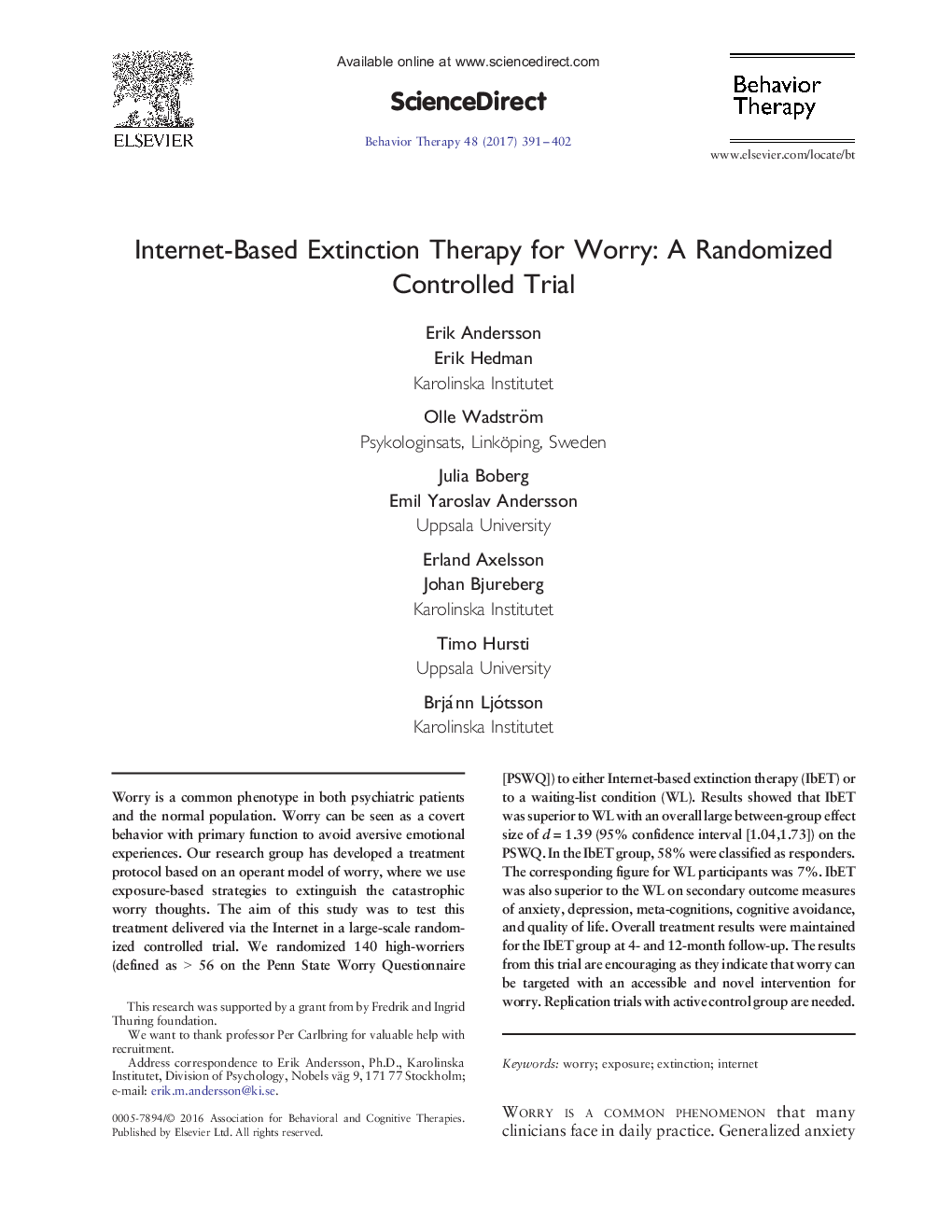| Article ID | Journal | Published Year | Pages | File Type |
|---|---|---|---|---|
| 5037990 | Behavior Therapy | 2017 | 12 Pages |
â¢This is a randomized trial testing internet-based extinction therapy (IbET) in a mixed sample of high worriersâ¢140 subjects were randomized to IbET or waiting listâ¢Results showed that IbET was superior to waiting list with an overall between group effect size of d = 1.39â¢We conclude that IbET may be effective in treating worry
Worry is a common phenotype in both psychiatric patients and the normal population. Worry can be seen as a covert behavior with primary function to avoid aversive emotional experiences. Our research group has developed a treatment protocol based on an operant model of worry, where we use exposure-based strategies to extinguish the catastrophic worry thoughts. The aim of this study was to test this treatment delivered via the Internet in a large-scale randomized controlled trial. We randomized 140 high-worriers (defined as > 56 on the Penn State Worry Questionnaire [PSWQ]) to either Internet-based extinction therapy (IbET) or to a waiting-list condition (WL). Results showed that IbET was superior to WL with an overall large between-group effect size of d = 1.39 (95% confidence interval [1.04,1.73]) on the PSWQ. In the IbET group, 58% were classified as responders. The corresponding figure for WL participants was 7%. IbET was also superior to the WL on secondary outcome measures of anxiety, depression, meta-cognitions, cognitive avoidance, and quality of life. Overall treatment results were maintained for the IbET group at 4- and 12-month follow-up. The results from this trial are encouraging as they indicate that worry can be targeted with an accessible and novel intervention for worry. Replication trials with active control group are needed.
